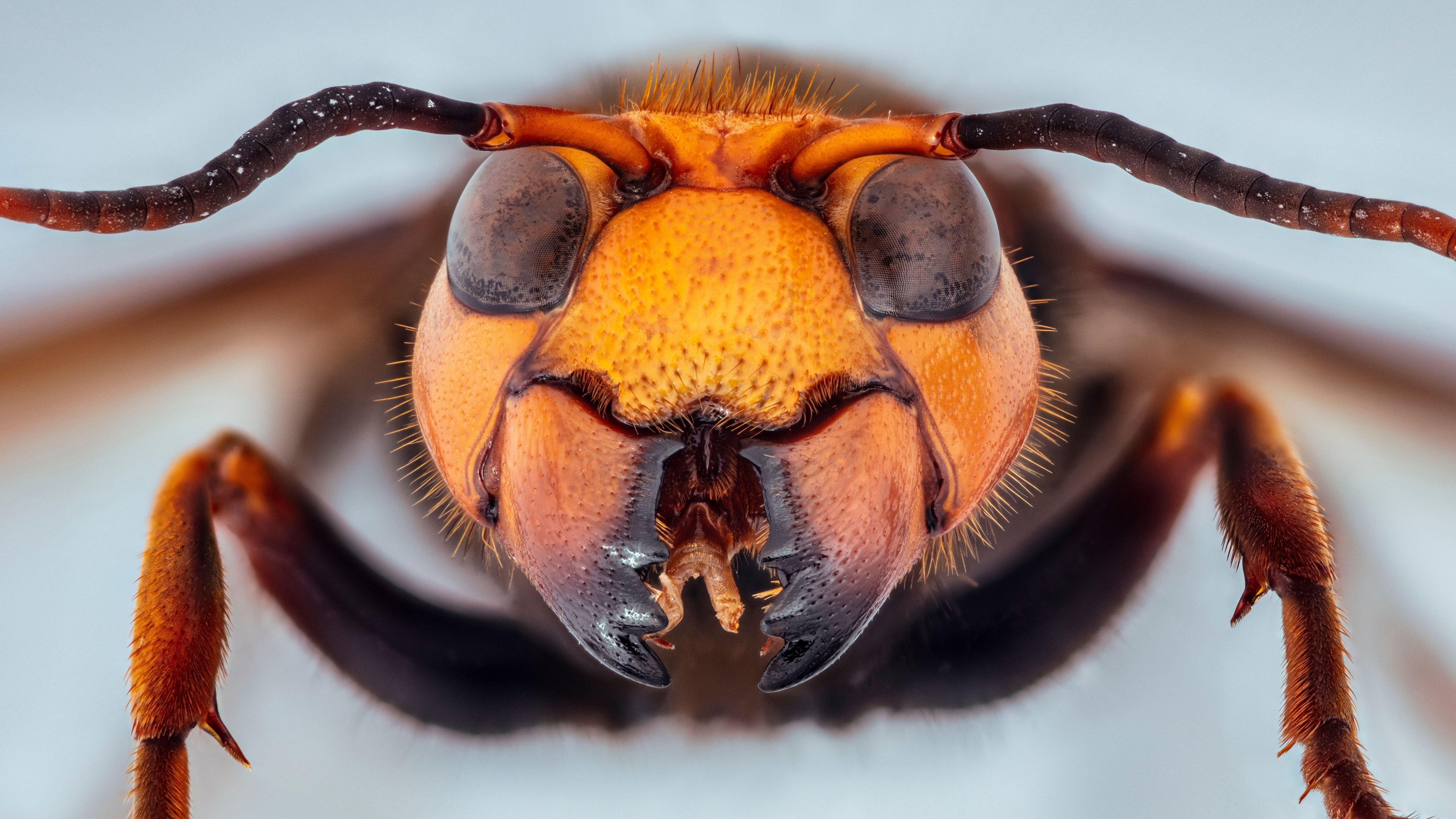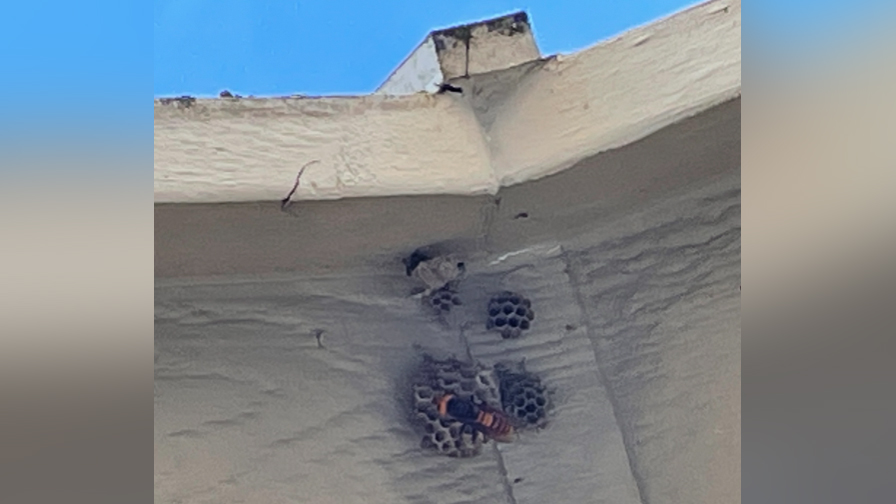Invasive 'murder hornets' are officially back in the US
It had entered the "slaughter phase."

An invasive and destructive "murder hornet" has been spotted in Washington state for the first time this year, and the alien-looking insect was behaving accordingly — attacking a hive of paper wasps.
A Whatcom County resident reported the Asian giant hornet (Vespa mandarinia), which can reach 1.75 inches (4.4 centimeters) in length, on Aug. 11, just 2 miles (3.2 kilometers) from the first-ever U.S. sighting of this species in December 2019 near Blaine, Washington, according to the Washington State Department of Agriculture (WSDA).
"This hornet is exhibiting the same behavior we saw last year — attacking paper wasp nests," Sven Spichiger, WSDA managing entomologist, said in the statement. "If you have paper wasp nests on your property and live in the area, keep an eye on them and report any Asian giant hornets you see. Note the direction they fly off to as well."
Related: Photos: Murder hornets will haunt your nightmares

As their nickname suggests, murder hornets are savvy killers. When they find a honeybee nest, the hornets go into "slaughter phase," where they use their mega mandibles to kill and decapitate the bees by the thousands. Once they've slaughtered the hive — it takes just a few hornets several hours to take out an entire tens of thousands-strong hive — the hornets defend the hive as their own, snatching up the brood inside to feed their own offspring, WSDA said.
The giant hornet can also inject prey with a sizable amount of venom to deliver a painful sting, WSDA said. The amount of venom injected in one sting could kill a human, though such fatalities are rare, according to WSDA.
With this first sighting of 2021, WSDA will set up live traps in the area; entomologists will then tag the trapped hornet so they can track the individual back to its nest. Because the sighting occurred just a half-mile (0.8 km) from the U.S.-Canada border, officials there will also set up additional traps, WSDA reported in the statement.
Sign up for the Live Science daily newsletter now
Get the world’s most fascinating discoveries delivered straight to your inbox.
Last fall, WSDA used the same strategy to track these giant hornets. Once a nest was located in the hollow portion of a tree, WSDA crews had to don protective suits and face shields to get close enough to the nest for extermination. They filled the basketball-size nest with foam and then sucked the 100 to 200 hornets into vacuum canisters, Live Science reported at the time. To kill off any remaining insects, WSDA wrapped the tree where the nest was found in plastic and filled it with carbon dioxide.
Public reports of the Asian giant hornet are the key to finding and containing the invasive species, WSDA said. Last year, half of the department's 31 confirmed reports were made by the public.
Native to South and East Asia, murder hornets are considered invasive, non-native species. They can wreak havoc on an ecosystem by decimating honeybee populations, the WSDA explained.
If you see a hornet and are wondering if it's THE one, look for the orange-yellow face, oversized, teardrop-shaped eyes and a structure just above the mandibles that is not rounded as in other Asian hornets but rather deeply scalloped along the edge (sort of like a mini superhero cape), according to the University of Florida. (Here's more on how to ID a murder hornet.)
If you do spot a likely candidate, and you're in Washington State, report the sighting using the Hornet Watch Report Form and email WSDA at hornets@agr.wa.gov.
Originally published on Live Science.
Jeanna Bryner is managing editor of Scientific American. Previously she was editor in chief of Live Science and, prior to that, an editor at Scholastic's Science World magazine. Bryner has an English degree from Salisbury University, a master's degree in biogeochemistry and environmental sciences from the University of Maryland and a graduate science journalism degree from New York University. She has worked as a biologist in Florida, where she monitored wetlands and did field surveys for endangered species, including the gorgeous Florida Scrub Jay. She also received an ocean sciences journalism fellowship from the Woods Hole Oceanographic Institution. She is a firm believer that science is for everyone and that just about everything can be viewed through the lens of science.










